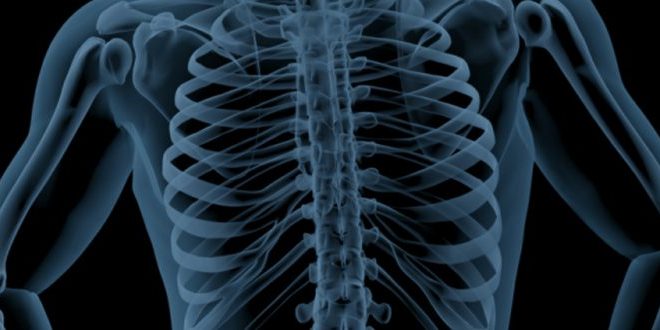Chiropractic Support for Neurological Conditions
Neurological conditions often involve more than the brain—they reflect disruptions across the entire nervous system. Misalignments in the spine, muscle tension, and faulty feedback loops can distort how the brain and body communicate, leading to pain, imbalance, and fatigue. Chiropractic care restores alignment, eases pressure, and supports neurological pathways for improved clarity, coordination, and recovery. By integrating gentle adjustments, fascia release, and functional movement training, this approach helps the nervous system work at its best.

When most people think about neurological conditions, they picture a brain-based problem—something complex and out of reach, often treated solely with medication or specialist interventions. But the nervous system doesn’t begin and end with the brain. It spans your entire body, connecting brain, spine, muscles, and organs into one dynamic network. And when one part of that system is out of sync, it can ripple into the rest.
The nervous system is the master control system of the human body. It’s made up of two main parts: the central nervous system, which includes the brain and spinal cord, and the peripheral nervous system, which branches out from the spine to reach every muscle, organ, and tissue. Every thought, movement, sensation, and function is coordinated through this vast and intricate network.
At the center of this system lies the spine, which acts as both the protective casing for the spinal cord and the structural highway for nerve signals. When the spine is healthy and properly aligned, messages travel freely between the brain and body. But when misalignments occur—due to injury, stress, poor posture, or repetitive movement—this communication can become distorted. The brain may receive delayed, altered, or incomplete information, leading to symptoms that show up as physical pain, movement dysfunction, or neurological imbalance.
In addition to spinal misalignment, tension in the muscles and fascia can compress nerves or create abnormal movement patterns. These imbalances confuse the body’s feedback system and place unnecessary stress on the nervous system, reducing its ability to self-regulate.
Chiropractic care works to restore balance in this system by realigning the spine, releasing muscle tension, and resetting movement patterns. When the structure of the body is corrected, the function of the nervous system improves. This allows signals to flow more efficiently between the brain and body—supporting clarity, coordination, healing, and overall neurological health.
Common Neurological Conditions That May Benefit from Chiropractic Support
Concussion and Post-Concussion Syndrome
After a concussion, the nervous system is often left in a state of dysfunction. Even when the initial trauma has healed, lingering symptoms like headaches, dizziness, cognitive fog, and neck pain can persist. Chiropractic care—especially focused on the cervical spine—helps by relieving tension, correcting alignment, and restoring proper neurological feedback. Movement-based recovery and fascial release techniques can further support balance and clarity during healing.
Headaches and Migraines
Tension in the neck, poor posture, and misaligned vertebrae are frequent contributors to chronic headaches and migraines. These factors can affect blood flow and nerve sensitivity in the head and face. Chiropractic adjustments help reduce spinal and muscular tension, improve vascular function, and calm overactive nerve responses—leading to fewer and less intense episodes.
Multiple Sclerosis (MS)
While chiropractic care does not treat MS itself, it can play a helpful role in managing symptoms. Gentle adjustments, postural support, and soft tissue therapy can improve mobility, reduce fatigue, and support better body awareness. For many individuals with MS, chiropractic care helps them move with less pain and maintain greater independence.
Peripheral Neuropathy
Peripheral neuropathy often causes burning, tingling, or numbness in the hands and feet. Chiropractic care supports nerve health by improving spinal function and reducing physical stress on the nervous system. By releasing tension in surrounding fascia and improving circulation, chiropractic therapy can help restore better nerve signaling and reduce discomfort.
Parkinson’s Disease
For those living with Parkinson’s, stiffness, balance issues, and postural collapse can make daily life more difficult. Chiropractic support focuses on improving spinal alignment and mobility, reducing muscle rigidity, and supporting the body’s natural movement patterns. With consistent care, many patients report better posture, more fluid motion, and reduced discomfort.
Cervical Dystonia and Torticollis
These conditions involve involuntary muscle contractions in the neck, often causing abnormal head positions and pain. Chiropractic and fascial therapy work together to reduce muscular tension, release adhesions, and re-pattern movement. Restoring proper alignment and reducing pressure on nearby nerves can make a significant impact on symptom severity and frequency.
ADHD, Sensory Processing, and Developmental Delays in Children
The nervous systems of children with these conditions are often overstimulated, under-responsive, or disorganized. Gentle pediatric chiropractic care focuses on improving nervous system regulation by enhancing spinal alignment, calming fascial restrictions, and supporting better brain-body communication. With consistent care, many families report improvements in focus, behavior, sensory tolerance, and motor development.
How Chiropractic Helps: The Mechanisms Behind It
Spinal Alignment and Neurological Feedback
When the spine is properly aligned, the nervous system can transmit signals between the brain and body without interruption. Misalignments—especially in the cervical spine—can create pressure or tension that alters nerve signaling. Realigning the spine restores that natural feedback loop, allowing the brain to interpret and respond to the body more accurately.
Fascia and Muscle Rebalancing
The fascia and muscles surrounding the spine play a huge role in how the brain perceives movement and posture. Chronic tension or compensation patterns send distorted messages back to the brain, causing dysfunction and fatigue. Chiropractic care includes precise muscle activation, fascial release, and rebalancing techniques to reset these feedback patterns and support smoother, more coordinated movement.
Improved Blood Flow and Oxygenation
Spinal adjustments and soft tissue therapy can improve circulation, especially in areas that were previously restricted due to tension or compression. Better blood flow enhances oxygen delivery to brain and nerve tissue—key components in recovery, energy regulation, and cognitive clarity.
Reduction of Inflammation
Chronic inflammation is a common thread in many neurological conditions. It can irritate nerves, slow healing, and disrupt the brain’s ability to regulate body systems. Chiropractic care helps break this cycle by relieving joint pressure, improving motion, and supporting the body’s natural anti-inflammatory processes.
Movement Restoration
Movement is essential for brain health. Every step, stretch, and shift sends information back to the brain. When motion becomes restricted—due to pain, compensation, or neurological delay—the brain’s ability to adapt and regulate begins to decline. Chiropractic care helps reset movement patterns, allowing the nervous system to rewire and improve neuroplasticity, balance, and coordination over time.
Mountain Movement’s Unique Approach to Neurological Support
The Day Method
Developed by Dr. Michael Day, The Day Method is a comprehensive full-body analysis system that goes beyond standard chiropractic evaluation. This method identifies hidden dysfunctions in movement, muscle activation, and joint control that may be disrupting neurological balance. The goal is to uncover the "why" behind symptoms—so we can address the root cause, not just the surface-level problem.
Neuro Reset
Neuro Reset is our proprietary technique designed to help recalibrate the nervous system. It works by restoring balance in pathways that have become overstimulated or underactive. Whether it’s tension that won’t release, muscles that won't activate, or movement that feels disconnected, Neuro Reset helps unlock these patterns and re-establish better brain-body communication.
Laser Therapy
Inflammation is often a major barrier to neurological healing. Our Multi Radiance Laser system uses safe, targeted light therapy to penetrate deep into tissues and reduce inflammation at the cellular level. This therapy supports healing in nerves, joints, and soft tissue, and it’s especially effective in cases involving chronic pain, neuropathy, or recovery from injury.
Functional Movement Instruction
Restoring movement isn’t just about getting stronger—it’s about retraining the brain to move efficiently and safely. Our movement instruction programs are designed to rewire dysfunctional movement patterns and teach the body how to move in a way that supports nervous system health. This is especially helpful for patients with neurological fatigue, balance issues, or sensory challenges.
Functional Medicine Integration
Healing doesn’t stop with alignment—it continues through internal systems that affect brain health. We integrate functional medicine testing to assess for hormonal imbalances, toxin exposure, nutrient deficiencies, and gut-brain dysfunction. These insights allow us to tailor a personalized plan that supports neurological function from the inside out.
Empowering the Nervous System Naturally
Chiropractic care isn’t a cure for neurological conditions—but it is a powerful tool that supports the systems that influence them. By improving spinal alignment, reducing muscle and fascial tension, and restoring healthy movement patterns, chiropractic care helps the brain and body communicate more effectively. That’s where healing begins.
If you’re navigating a neurological condition—whether it’s post-concussion symptoms, chronic headaches, movement disorders, or sensory challenges—you are not without options. You are not stuck. Real progress is possible when the body’s foundational systems are restored.
At Mountain Movement Chiropractic & Natural Health, we don’t just focus on symptoms. We focus on reactivating the systems that allow your body and brain to function with greater ease, clarity, and purpose. With the right approach, the nervous system becomes more adaptable, more resilient, and better equipped to handle the demands of daily life.
Mountain Movement Chiropractic & Natural Health
📍 1901 Laurens Road Suite E, Greenville, SC 29607
📞 (864) 448-2073
🌐 mountainmovementcenter.com
💬 Connect with us on Facebook
📅 Join Dr. Day during his weekly movement workshop with Bon Secours Well Walkers

We Treat the
Toughest Cases
We'd love to talk with you about yours. Ask us anything and we will get back to you with a detailed answer about your case.

.jpg)




